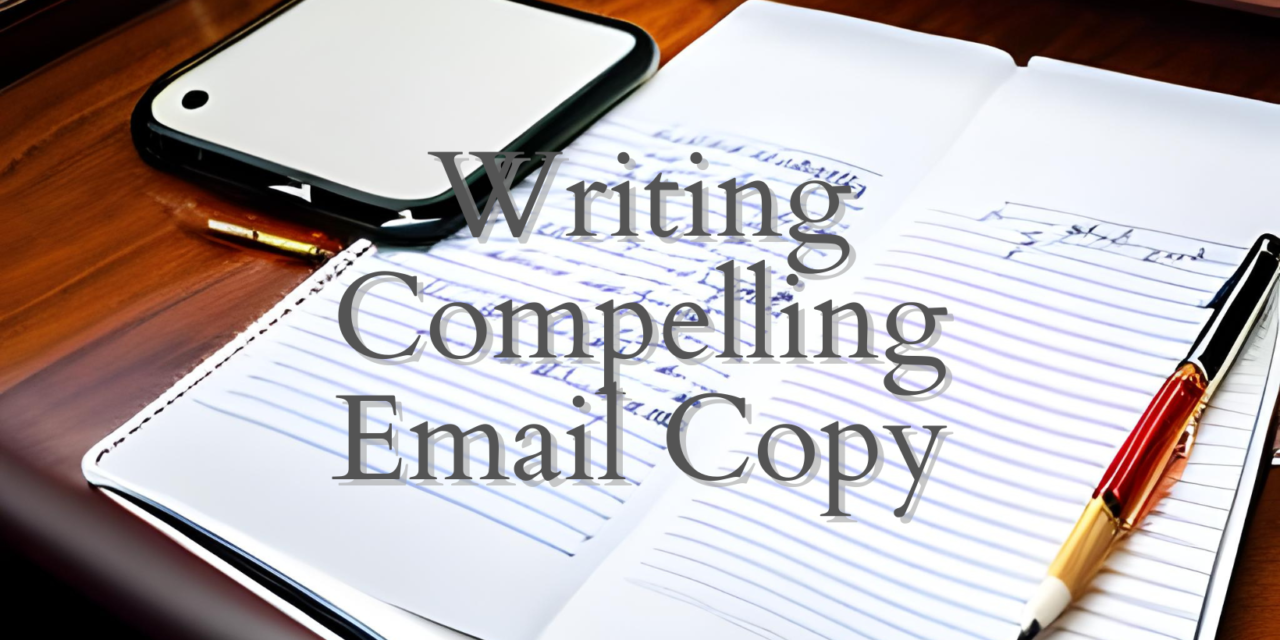Are your email campaigns failing to engage your audience? Are your open rates plummeting and conversions stagnating? It might be time to revamp your email copy! Crafting compelling email content is an art that can significantly impact your marketing success. After reading a ton of articles so you don’t have to I’ve complied a list of tips and techniques to help you write irresistible email copy that grabs attention, fosters engagement, and boosts conversion rates.
1. Know Your Audience Inside Out
The first rule of crafting compelling email copy is understanding your audience. Take the time to research their preferences, pain points, and interests. Segmentation is your friend; tailor your messages to specific groups to make them feel more personalized. Address your subscribers by name to add a touch of familiarity and increase open rates. Remember, relevance is key to engaging your readers. Still need help understanding your audience? Send a survey to get a better understanding of their interests and potential segments you were not engaging with before.
2. Start with a Captivating Subject Line
Your subject line is the gateway to your email content. Make it enticing, intriguing, and informative. Avoid clichés and clickbait tactics. Instead, offer value or curiosity that makes your recipients eager to know more. Keep it concise, ideally under 50 characters, to ensure it doesn’t get cut off on mobile devices. Did you see my article on subject lines? If not be sure to check it out.
3. Craft a Compelling Opening
The email’s opening lines are critical for hooking your readers. Begin with a strong and personalized greeting to build an immediate connection. Share a compelling story, ask a thought-provoking question, a customer review, or state a surprising fact related to their emails content. The goal is to grab attention within the first few seconds and encourage recipients to read further. For example if this was a newsletter I might start it with a fact like “Did you know that for every $1 spent on email marketing, the average return on investment (ROI) is $42? That’s a whopping 4200% ROI, making email one of the most cost-effective and powerful marketing channels out there.“
4. Maintain a Conversational Tone
Your email should read like a friendly conversation rather than a sales pitch. Use a conversational and relatable tone that resonates with your audience. Avoid jargon and complex language; instead, focus on clarity and simplicity. Write as if you’re addressing a friend, and you’ll create a more engaging and approachable email. No one likes being sold to all the time, act like you’re emailing a personal contact about the details your planning to share.
5. Keep it Scannable
Most people skim through emails rather than reading them word-for-word. Organize your content into short paragraphs, use bullet points, and incorporate subheadings to make your email easy to scan. Highlight essential information and calls-to-action (CTAs) so that even skimmers can grasp your main points. No one likes walls of text (unless you’re reading a blog article like this one).
6. Create Powerful CTAs
A strong Call-to-Action (CTA) is the driving force behind conversions. Use action-oriented language that motivates readers to act immediately. Be specific about what you want them to do, whether it’s making a purchase, signing up for a webinar, or downloading a resource. Add a sense of urgency or limited-time offers to encourage prompt responses.
7. Incorporate Visual Elements Wisely
Visuals can enhance the appeal of your emails, but use them sparingly. Large image files may slow down loading times and distract from your message. Optimize images for mobile devices and always include descriptive alt-text for better accessibility. Remember that some recipients may have images disabled, so ensure your email still makes sense without them. Make good use of Alt tags, and imagery in your emails, remember a picture says 1000 words.
8. Test and Analyze
Never underestimate the power of A/B testing. Experiment with different subject lines, content, CTAs, and visuals to determine what resonates best with your audience. Analyze the data, including open rates, click-through rates, and conversion rates, to gain insights into what works and what doesn’t. Don’t just take my word for it, testing your changes, iterate and test again.
9. Personalisation and Segmentation
To truly connect with your audience, use personalisation and segmentation. Address recipients by their names, offer tailored content based on their preferences, and send emails at times that align with their time zones and habits. The more relevant and personalized your emails, the higher your engagement rates will be. Implement tools like Send-Time-Optimization (STO), or Time zone sending if you know the preferred times your customers are reading and engaging with your emails.
10. Proofread and Edit
Last but not least, always proofread and edit your email copy before hitting the send button. Typos and grammatical errors can undermine your credibility and professionalism. Use spelling and grammar checkers, and have colleagues review your content for a fresh perspective. Localization is a major issue for some senders, especially those in the EU, make sure you’re sending regionally appropriate content.
Writing good content that engages is accomplished by understanding your subscribers, crafting engaging subject lines, and incorporating visual elements strategically, you can significantly enhance the effectiveness of your email campaigns. Regular testing and personalisation will further refine your approach, ensuring your emails resonate with recipients and drive higher engagement and conversions. Be sure you balance testing and personalisation to ensure all these elements are working and resonating with your subscribers.


